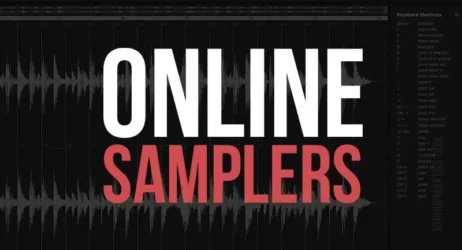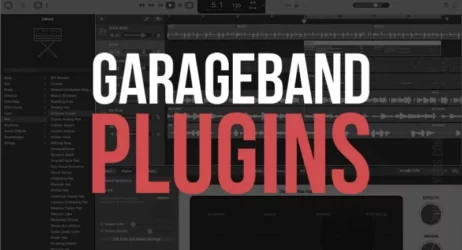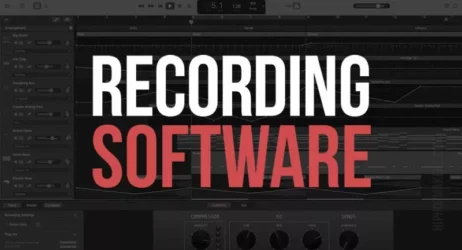This guide will answer what are chord progressions, the different types of chord progressions, and provide tips and suggestions to make your own.
What Are Chord Progressions?
Chord progressions are a sequence of chords that lay the foundation in music. Chord progressions are a series of chords played to create a rhythmic tune. If only two chords are played, it’s called a cadence; whereas, more than two chords played in a row can be referred to as a progression.
- What Are Chord Progressions
- How Do Chord Progressions Work
- The Most Common Chord Progressions
- What Are Major Chord Progressions
- What Are Minor Chord Progressions
- Chord Progressions Charts
- Chord Progression Generator
- How To Make Chord Progressions
- How Many Chord Progressions

What Are Chord Progressions?
A chord progression or rhythmic progression is a series of chords in a musical composition. From the typical practice era of Classical music through the twenty-first century, chord progressions have been the cornerstone of harmonization and balance in Western musical, cultural heritage.
Chord progressions are the cornerstone of Western popular music forms (such as pop and rock music) and traditional music (e.g., blues and jazz). Chord progressions are the distinguishing aspect of various genres, upon which melody and rhythm are created.
In simple words, a chord progression is just a repetitive and successful playing of various chords to engineer a musical beat or tune. However, not all successive chords can be termed as a progression, and if only two chords are played in succession, the term for it is ‘cadence’ instead of ‘progression.’
Because some chords work well together to inundate feelings, emotions, and a gratifying sense of progress in music, certain familiar chord progressions are utilized repeatedly in popular music. As a result, there are a lot of ‘3 chord songs’ and ‘4 chord songs’ that you might come across when you take your plunge into the world of chord progressions.
The intricacy of a chord progression varies depending on genre and historical time. Simple chord progressions may be found in several pop-and rock songs from the 1980s through the 2010s.
Because funky rhythms stress on groove and rhythm as crucial elements, whole funk songs may be centered around a single chord.
A two-, three-, or four-chord vamp underpins several jazz-funk songs. Only a few chords are used in certain punk and hardcore punk songs. On the other hand, Bebop jazz tunes may contain 32-bar song structures with one or two-chord progressions every bar.
Chord progressions in tonal music serve the purpose of establishing or opposing a melody, which is the formal term for what is popularly referred to as a song’s or piece’s ‘key.’ In Classical music theory, chord progressions are typically represented by Roman numerals.
Chord progressions are articulated utilizing the name and “grade” of the chords in various kinds of popular and traditional music. In a fake book or lead sheet, the previously indicated chord progression using C major would be worded out as C major–A minor–D minor–G major. The letter “C” denotes that the chord is constructed on the foundation note “C,” and the word “major” indicates that it is a powerful chord built on this “C” note.
How Do Chord Progressions Work?
If you’re playing more than three chords in a sequence of series, you’re doing a chord progression; it’s as simple as that. Chords are played in succession to create a harmonic progression and a chorus, bridge, or verse.
Chord progressions are molded by the scale and key of a particular tone that determines the cadence’s overall ‘feel’ and style. Most composers are adept at making powerful chord progressions keep it simple by not hitting more than 2 or 3 middle chords.
Music enthusiasts like to disguise chord progressions as a musical adventure that disembarks the listeners on a journey. A good chord progression builds up emotions inside its listener as soon as it starts.
The artist’s decisions greatly influence the psychological reverberation of the chord progression. Changing one chord in a sequence may transform it from somber to joyous, dark to bright, or optimistic to dismal.
What Are The Most Common Chord Progressions?
Engineering brand new chord progressions is not a piece of cake, and because of this, you’ll see a lot of musical works built around the same common chord progressions.
Listed below are some of the common chord progressions.
I-V-vi-IV
This progression is one of the most common chord progressions and is utilized in almost every genre, from country to post-punk. This chord possesses the ability to resurface your emotions and make you feel alive and fresh.
12 Bar Blues
It is the fundamental sound of blues music, although it may also be heard in various other genres. The 12-bar blues might sound more “happy” than gloomy depending on how you employ it.
I-bVII-I
This is more of a harmonic method prevalent in rock and pop tunes than a chord progression.
ii-V-I
Being the heart of almost all jazz tunes, having knowledge of these progressive is imperative. Even if you’re not a jazz fan, these timeless harmonic structures are worth learning.
I-vi-IV-V
This frequent chord progression is linked with classic love ballads and doo-wop melodies from the 1950s, although they may be found throughout music history. It seamlessly transitions from the tonic to the sixth in the first half, making it a fantastic blank canvas for vocal melodies. Each chord that follows adds to the enthralling arc that this progression creates as it returns to the baseline.
Canon
This chord pattern is derived from one of classical music’s most lasting advancements. The trick to this progression is exploring so many distinct chords in the key before returning to the base tone.
I, IV, and V
The basic building blocks in western music, these chords are the cornerstone of popular music (every genre). Moving back and forth in time and back again creates the impression of tension and release that propels the chord progressions ahead.
What Are Major Chord Progressions?
A major chord pinpoints to a chord that has a core, a significant third, and a perfect fifth in musicology. Similarly, a major triad is a chord that has these three specific notes. Major chords contain the major scale’s first, third, and fifth degrees.
The ‘I’ is the root chord, as well as the key name. The I, IV, and V chords are always major; the ii, iii, and vi are minor; and the vii° is diminished.
Examples of major chord progressions include:
- D major chord (D): Consists of the notes D, F, and A.
- G major chord (G): Consists of the notes G, B, and D.
- C major chord (C): Consists of the notes C, E, and G.
- A major chord (A) is composed of the notes A, C, and E.
What Are Minor Chord Progressions?
Minor scales and minor chord progressions provide more melodic opportunities than major keys and major chord progressions. Songs in minor keys commonly pulse to major and back to minor.
In some songs, the same chord might appear in both major and minor keys. A minor chord comprises the first, flattened third, and fifth degrees of that note’s major scale.
What Are Chord Progressions Charts?
A chord progression chart is a type of musical notation that represents the fundamental tonal and rhythmic characteristics of a song or melody. It is the most prevalent notation style used by pro instrumentalists who play jazz or popular music.
A chord progression chart usually includes chord symbols and text but no musical notation. If you learn to read a chord progression chart, the chances are that you won’t even need chord progression generators to help you master chord progressions.
What Is A Chord Progression Generator?
A chord progression generator is an online tool you can use to build and play chord progressions. Over the internet, you’ll find many chord progression generators; you need to pick the one that suits you and your melody best.
The chord progression generators allow you to effortlessly develop and play new tunes that will undoubtedly inspire you in your current and future compositions.
Related: 10 Free Chord Progression Generators Online
How To Make Chord Progressions?
Once you know the ins and outs of chord progressions, nothing stops you from creating them. Here are some simple steps to make clever chord progressions.
Do your research on instrument keys and choose a key to begin with. If you’re a beginner musician, we’d suggest that you start with a C major, A minor, E minor, or G major keys.
Use the I chord to initiate and conclude your chord progression.
Workaround the most primitive chords like I, IV, and V. Once you focus your progressions around these chords, you can transition to secondary chords like II, III, and VI.
Get the ball rolling with the most common and circle progressions.
How Many Chord Progressions Are There?
According to some instrumentalists and music maestros, there are around 4017 possible chords. Moreover, this number doesn’t even include voicing chord progressions.
To break it down, there are:
- 220: 3-note chords.
- 495: 4-note chords.
- 792: 5-note chords.
- 924: 6-note chords.
- 792: 7-note chords.
- 495: 8-note chords.
- 220: 9-note chords.
- 66: 10-note chords.
- 12: 11-note chords.
- 1: 12-note chord.
Summary of Chord Progressions
A Chord Progression is a series of chords that lead from one to another. In a chord, 3 or more different notes are played at the same time. A progression is a series of two or more chords in a particular order. It can also refer to the order in which the chords appear in the song.
I hope you found this information on chord progressions helpful.
If we missed anything, please share it in the comments.





